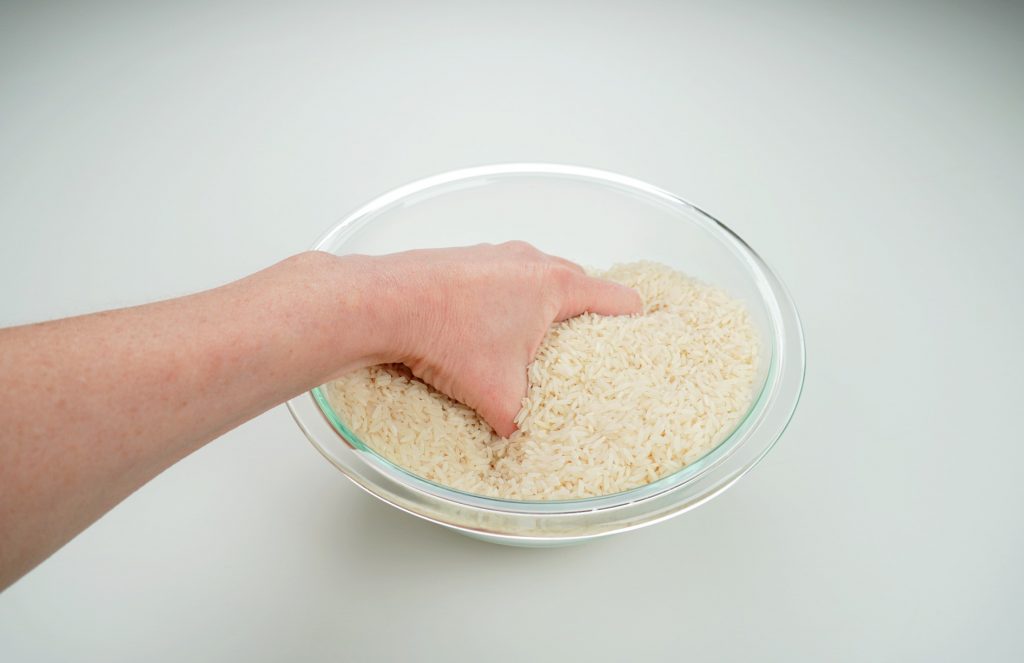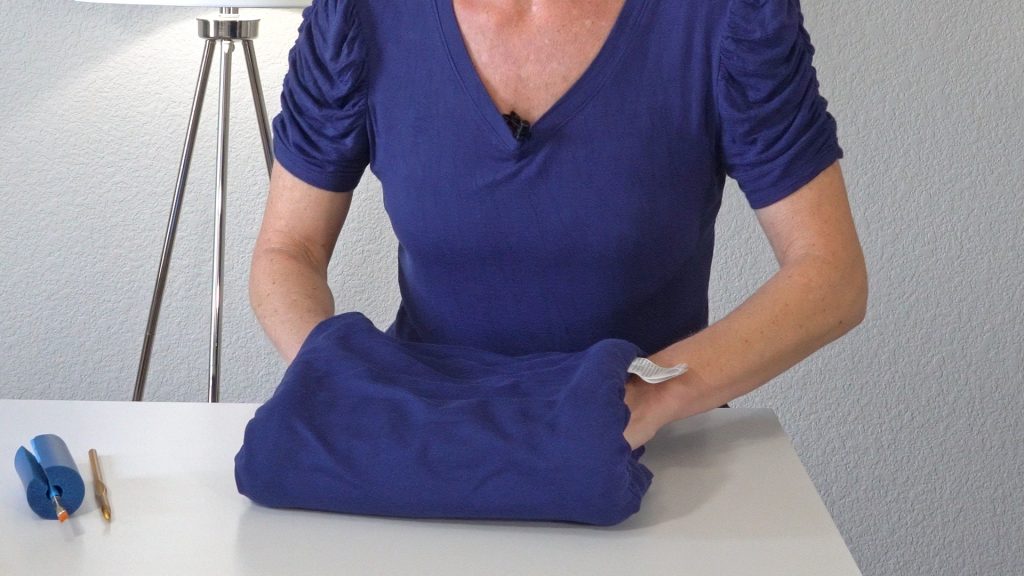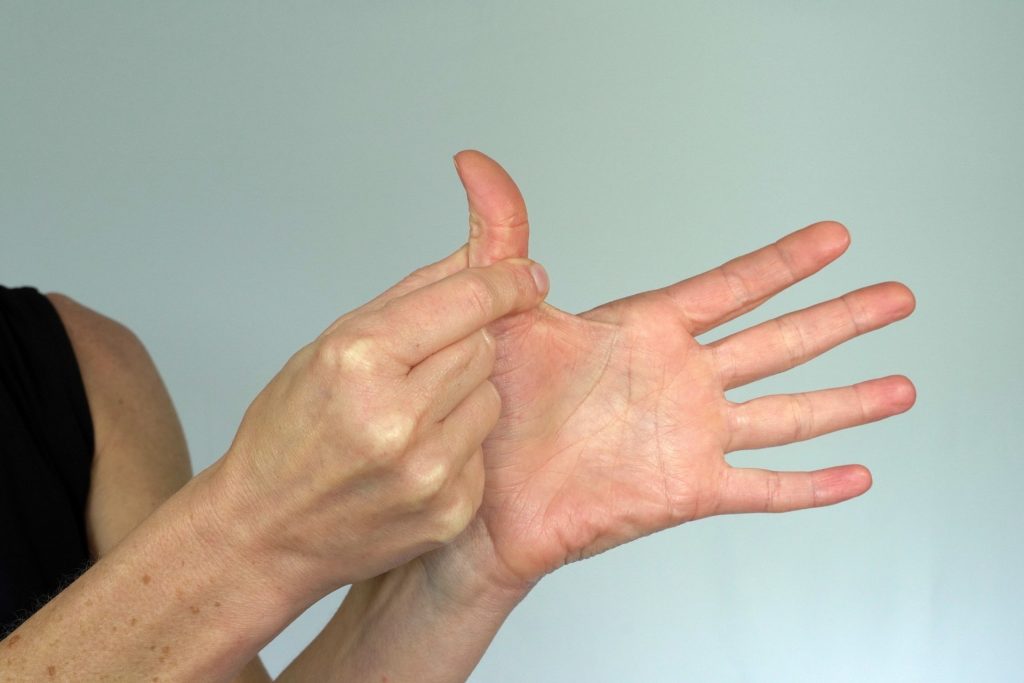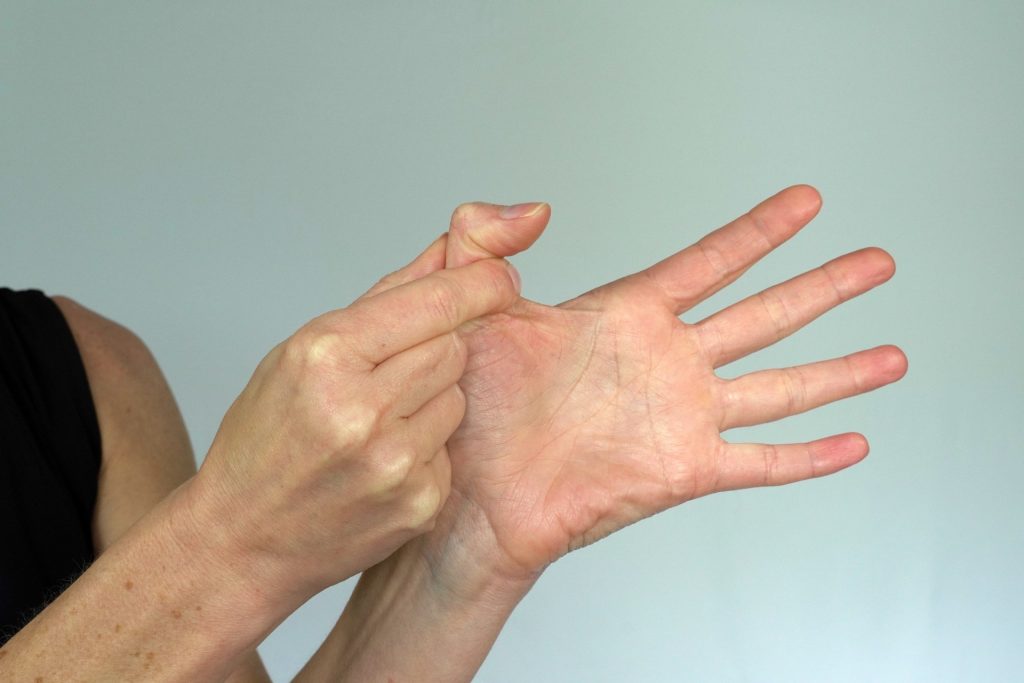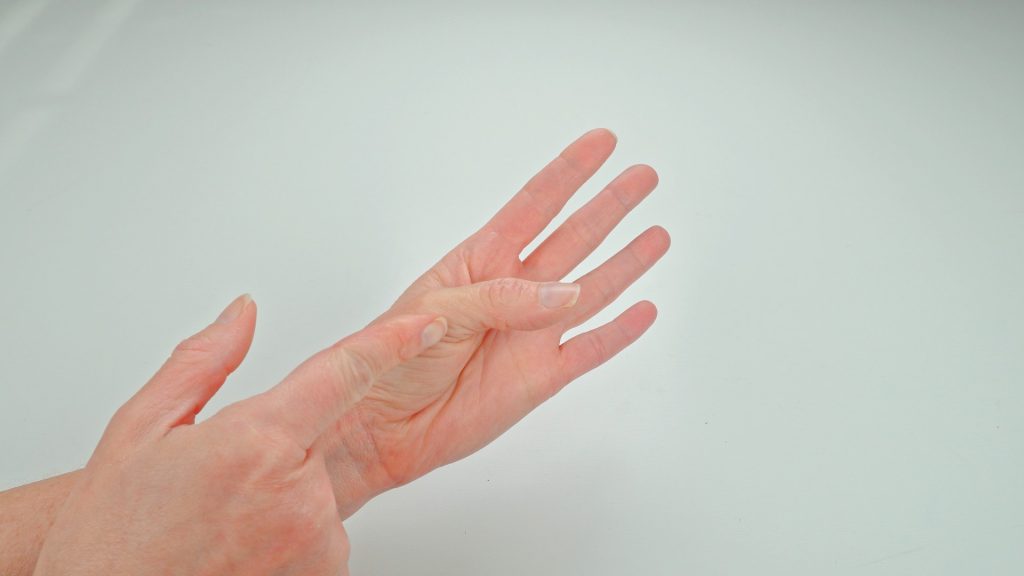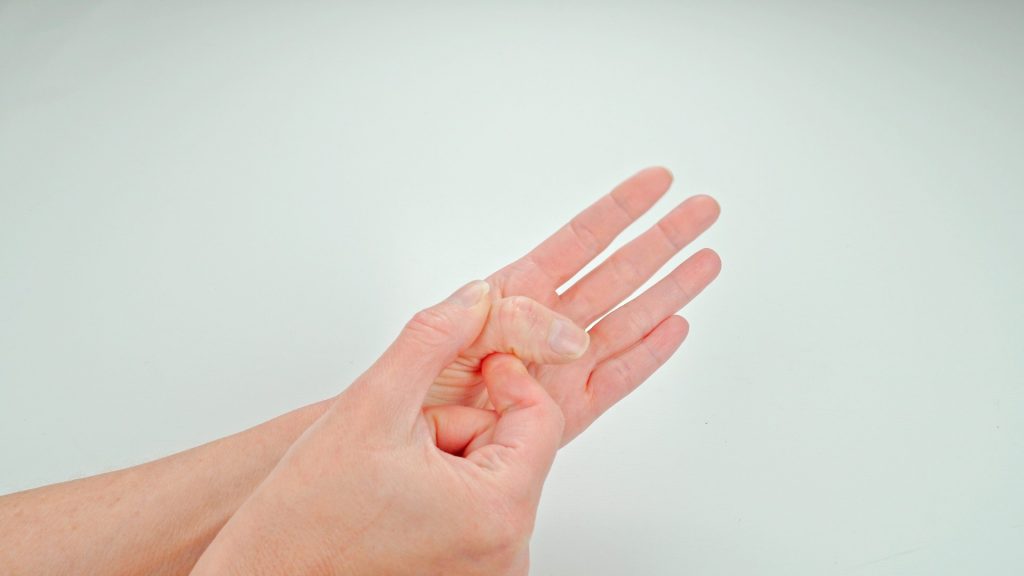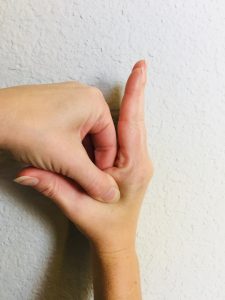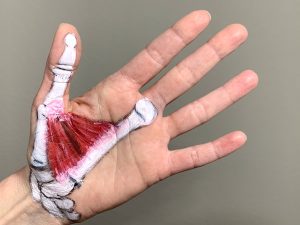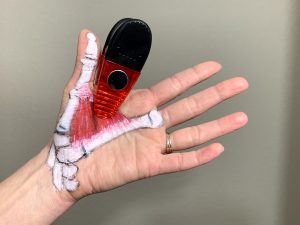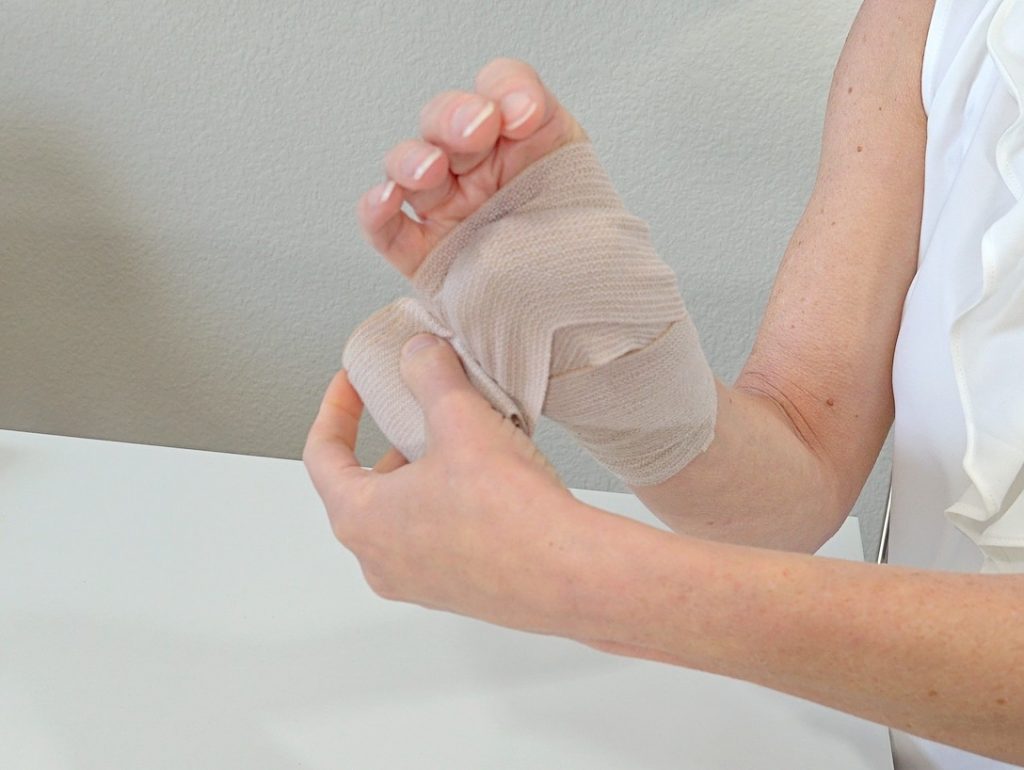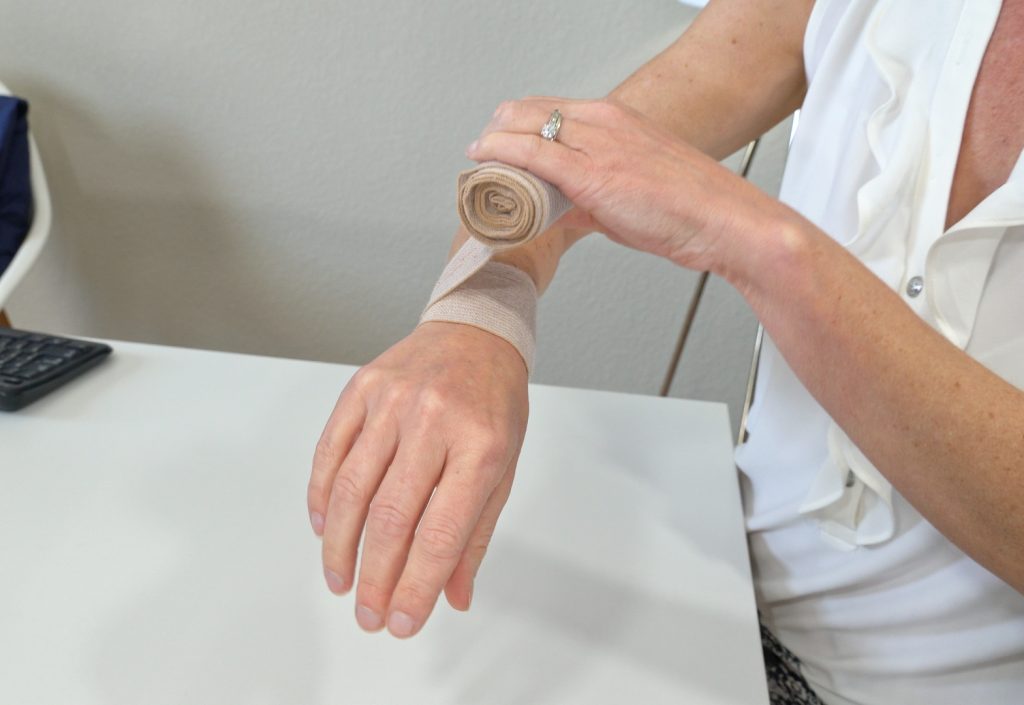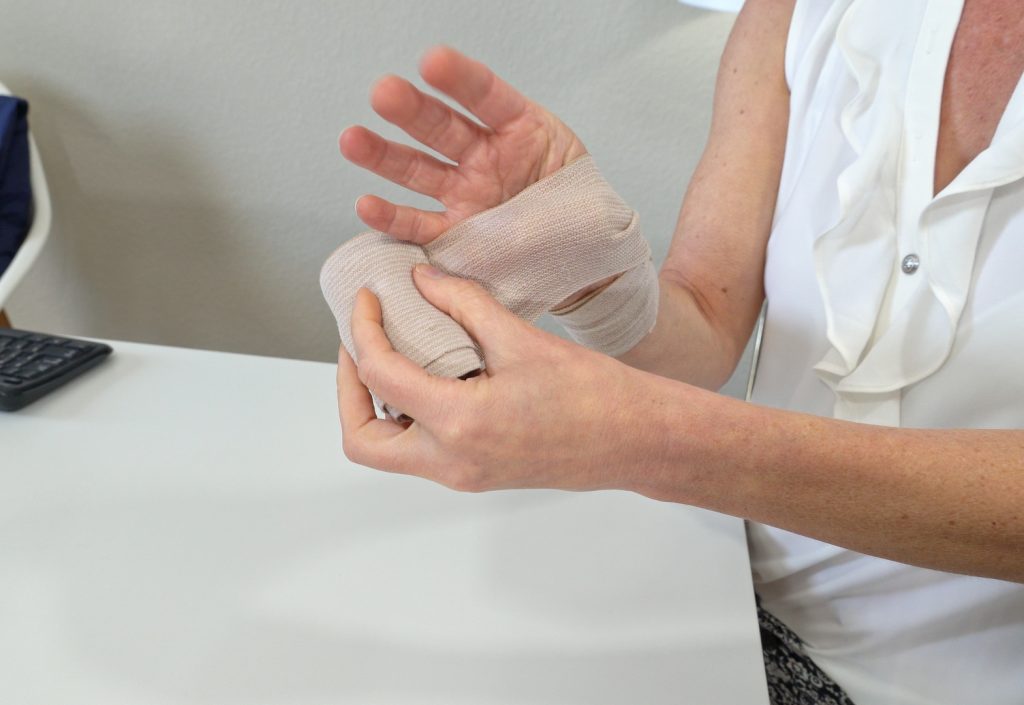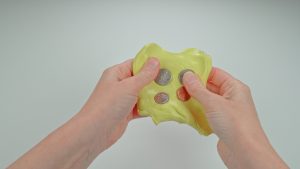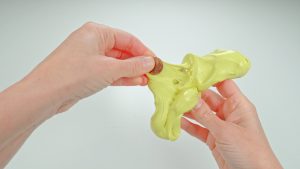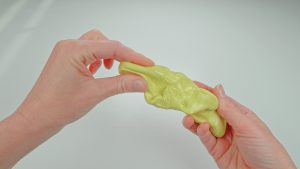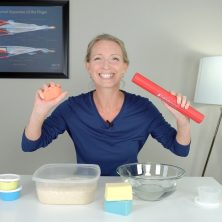In this blog post, I’m going to share how to treat stiff thumbs after a broken thumb or injury. These are my 5 best treatments to get your thumb moving after a fracture, injury, surgery, or arthritis.
These treatments and exercises will help you improve your thumb stiffness, increase your range of motion, and increase your thumb strength.
As you will notice, these suggested treatments will start with the importance of warming up your thumb. But will then progress into stretching and strengthening your thumb.
Ultimately, these treatments will improve the way your thumb feels and functions!
Disclaimer: Always make sure that you are completely healed and that you get clearance from your doctor before you start this program or any kind of program.
Download your Thumb Exercise Worksheets Now
How to Treat Stiff Thumbs After a Broken Thumb or Injury Tip #1
Warming up with moist heat
Tip #1 is to apply moist heat to your hand and thumb.
Moist heat not only takes the edge off of achy joints but also reduces stiffness.
Luckily, there are many ways you can use heat.
One option is to pour dry rice in a bowl, then heat the rice in the microwave for 60-90 seconds.
(Please note microwave times vary. Always use caution with this method)
Place your hand in the warm rice bowl. The rice absorbs the heat and will stay warm for 10+ minutes.
You can also put rice in a sock, or if you’re crafty you can make your own little hot pack.
Similar to this one I made for myself here.
Don’t want to mess with rice?
Fortunately, there are many hot packs and wraps available online.
I have a couple favorites like this extra large hot pack, from Sunny Bay. It can be used as a cold pack too.
Plus, it’s big enough to conform around both hands.
You can learn more about my favorite heating wraps in my blog post here.
Another option is to use warm water in a sink or a bowl. Then perform gentle thumb movements in the warm water.
A perfect way to treat stiff thumbs.
How to Treat Stiff Thumbs After a Broken Thumb or Injury Tip #2
Increase motion with exercise
Now that you have warmed up your thumbs, it is time to work on mobility.
Tip #2 is an active exercise to the tip of your thumb, aka thumb IP blocking for flexion and extension.
This will help get the tip joint of your thumb moving. An important first step that is often overlooked.
To make this exercise more effective, you will be moving your thumb in different planes of motion.
Because that is the way we use our thumbs for daily activities.
You likely pinch and grasp items of all shapes and sizes. Placing your thumb at different angles depending on what you are working with.
To start, rest your hand on a pillow, table, or you can do these with your elbow propped up.
Start with your thumb extended as much as possible. It’s okay if you have limited extension.
Relax your fingers.
Use your other hand to block right below your thumb tip crease.
Actively bend and straighten just the tip of your thumb. Hold a few seconds when bending and when straightening. Repeat 10 times.
Make sure you bend and straighten through your full range of motion. However, do not push yourself to pain.
One mistake I find people doing with this exercise is they wiggle the tip of their thumb.
That is not effective.
You want to make sure you bend and straighten as much as you can.
Next you want to move your thumb toward your hand. Then do the same thing. Support the tip of your thumb, then actively bend and straighten. Repeat 10 times.
Now move your thumb even closer to your palm, then again, actively bend and straighten the tip of your thumb.
This exercise loosens up your thumb in different planes of motion. Mimicking the normal positions our thumb is placed in with various daily activities.
Lastly, one more time if you can, bring your thumb down toward your palm. Then repeat the exercise.
You should start noticing less stiffness in your thumb and improved mobility.
Keep in mind, the farther you move your thumb towards your palm the more challenging this exercise will feel.
You may only be able to move the tip of your thumb a millimeter. However, that is something.
Even a flicker of motion will turn into more.
Keep going!
Repeat these a couple of times a day, or as your stiffness persists.
How to Treat Stiff Thumbs After a Broken Thumb or Injury Tip #3
From there, the next exercise is to massage your thumb web space.
Often I find this can be challenging for people especially for those that have been in a cast or a splint.
Working on your thumb web space is so important when it comes to thumb mobility. After all, you need it when you are trying to grasp or hold objects.
There are a few different ways you can work on increasing your thumb web space motion.
Massage is one of them.
This can be done by using your other hand.
Lightly massage your skin and muscle located deep between your index finger and thumb.
There is a very strong but tight muscle called your adductor pollicis (AP). It is very deep into your skin.
If you’ve been immobilized, such as in a cast, your AP is likely a big reason for your limited thumb motion.
So we want to try to loosen that muscle with massage.
The deeper you massage, the more you may feel a stretch to your thumb..
If you don’t want to use your other hand, then you can modify this by using a chip clip, clothespin, or pressure point tool.
However, you want to use something that does not apply too much pressure. This can be uncomfortable for some of you, making it counterproductive.
To do this, attach the clip deep to your thumb web space. The area between your thumb and index finger
Leave the clip, or whatever tool you are using, for 10- 30 seconds. Relax your hand and thumb while it is on.
Repeat this 4-5 times.
If you felt the exercise in tips #2 was difficult, try it with the clip. Simply place the clip on your thumb AP muscle then try to do a few of those thumb blocking exercises.
See if you notice a slight improvement in mobility or in the way that exercise feels. If the clip helps improve your motion, then it may be your tight thumb adductor muscle keeping you from getting mobility.
In that case, you can combine tip #3 and #4 a couple times a day, or as needed.
How to Treat Stiff Thumbs After a Broken Thumb or Injury Tip #4
Now that you have warmed up your thumb with heat, exercise, and massage, let’s turn our attention to stretching.
With this tip, you will need an ace wrap, Coban, or tape. Something you can wrap over your thumb to provide a low load long stretch.
This tip is helpful if you have been trying everything to get your thumb moving but nothing seems to be working.
One reason could be that your thumb has been stiff for a long time. If that is the case, a long hold stretch may be needed.
To do this you want to wrap your thumb in as much flexion as possible to stretch it out over time.
You could use your other hand to stretch your thumb for several minutes.
However, that is not always ideal and could start aggravating your other hand!
Again this is a low load long stretch.
Low load means light stretching over a long length of time.
Recognize you do NOT want to stretch to a lot of pain. Keep your pain level around 2-3/10. I can’t emphasize that enough!
Let’s start.
First, wrap the tape, or ace, around your wrist. This creates an anchor point and will keep the wrap from slipping.
Flex your thumb across your palm as far as you can.
Note, I like to start on the back side of the hand.
As you are unrolling, stretch the wrap over your thumb. Making sure you’re stretching all thumb joints.
Wrap back around your wrist then come up over your thumb again.
Don’t forget to relax your fingers.
Again stretch the wrap over your thumb in as much flexion as possible.
Continue this process until you run out of wrap. Tuck the end of your ace wrap or tape it down.
Try to keep this type of low thumb stretch for 10-15 minutes. Again, the idea is not to stretch too aggressively.
One way to make this stretch a little more comfortable, and combine a few of these tips is to apply moist heat at the same time.
After 10-15 minutes, slowly remove the wrap. Then gently move your thumb.
Don’t move too fast.
The last thing you want to do is try to straighten your thumb after you have stretched in flexion.
Simply wiggle your thumb and fingers until you feel the discomfort dissolve.
How to Treat Stiff Thumbs After a Broken Thumb or Injury Tip #5
My last tip is thumb pinch strengthening.
You will need to purchase therapy putty for this exercise. link
I prefer using putty because there are many gripping and pinching exercises you can do with it.
Plus it is fun!
For this 1st exercise, find change or coins, maybe some marbles, something small to hide inside the putty. You will be picking these small little objects out of the putty.
For example, place some pennies, dimes and nickels in the putty. Squeeze the putty to make sure the coins are well hidden.
Next, use your thumb and index finger to try to find the coins and pull them out one at a time.
This works your thumb in a tip pinch pattern.
After you have pulled all of those items out, begin pinching and pulling the putty with your index finger, middle finger, and thumb.
By using your 2 fingers and thumb, this works on a common 3 point pinch.
To recap this strengthening exercise, you can pinch, pull, and hide objects in the putty.
Set yourself a timer for 3-5 minutes.
It’s easy to lose track of time and over do it with the putty.
Repeat 1-2 times a day or as needed.
Conclusion:
By now your thumb should feel amazing!
If you do all of these thumb stiffness tips, it may take you around 20-30 minutes to complete.
Keep in mind, if you’re feeling more pain then you may want to start with one or 2 of these tips. Then slowly add one at a time.
However, if your thumb feels great and you want more, then download my Best 5 Thumb Exercises for Thumb Stiffness.
Download your Thumb Exercise Worksheets Now
Do me a favor, if you found this post helpful do share with family and friends that use their hands a lot. Help them work through their thumb stiffness with these simple, yet effective thumb stiffness treatments.


